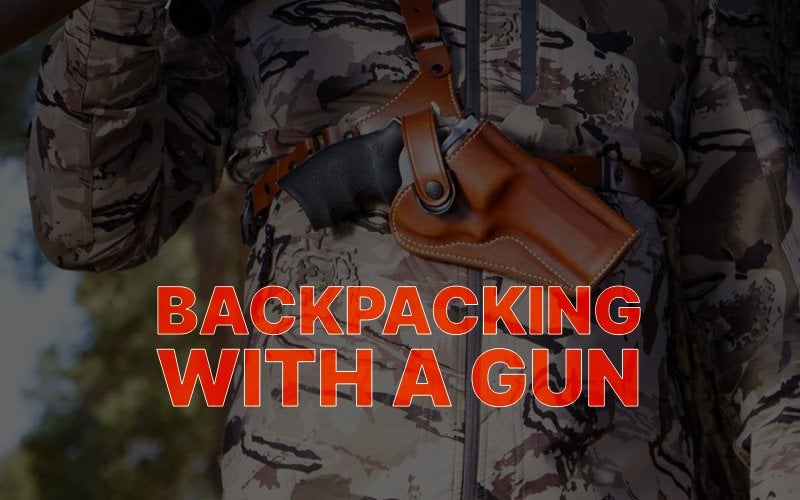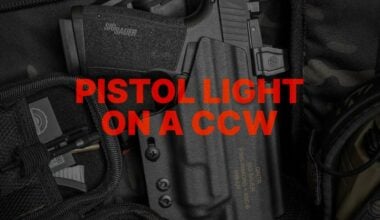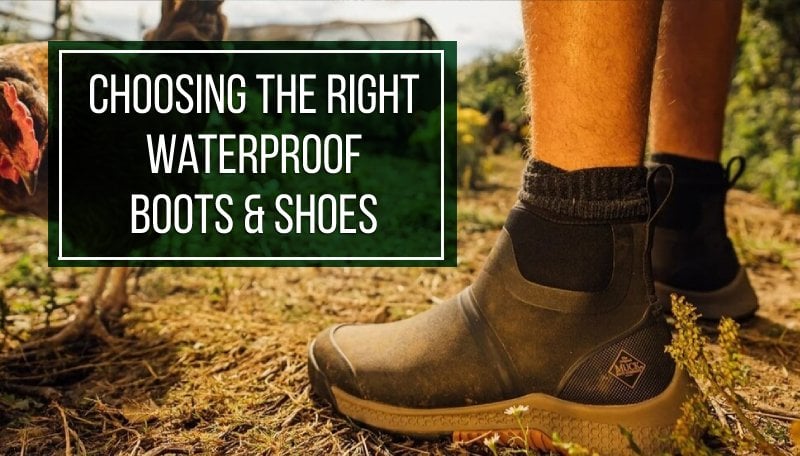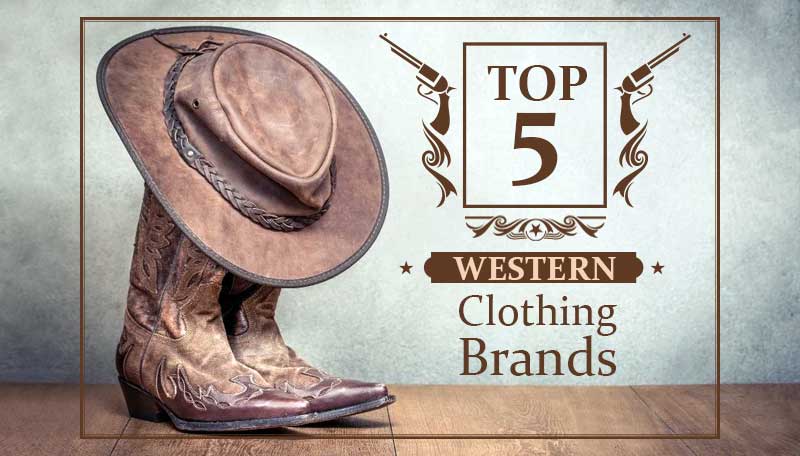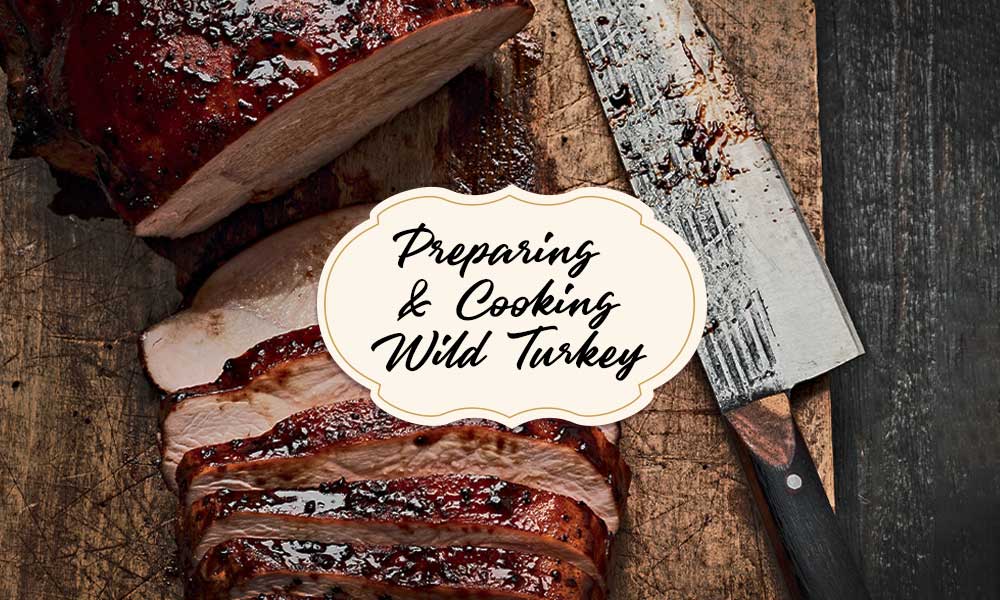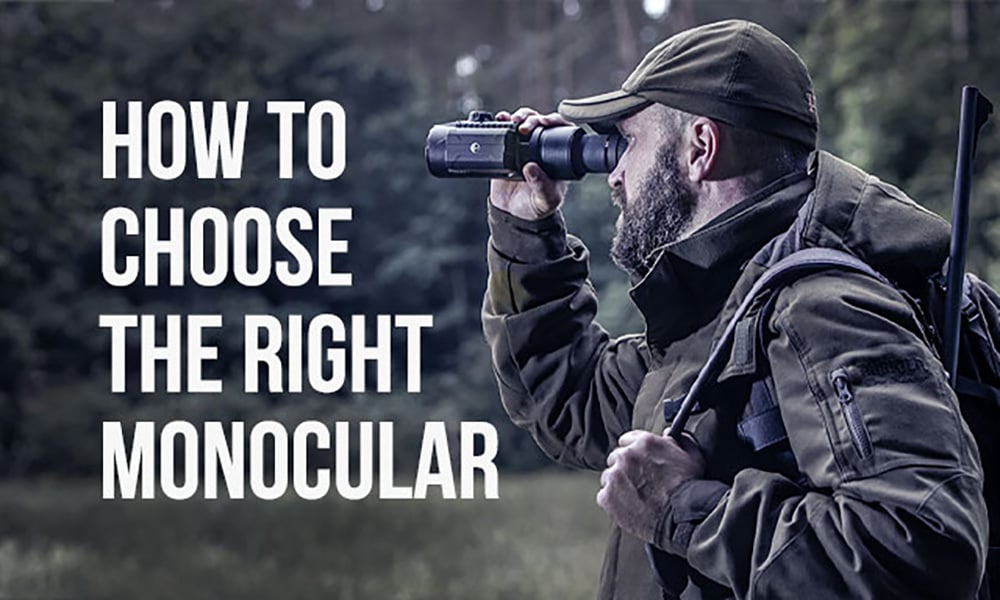Heading into the wilderness comes with its own set of challenges, and deciding how to stay safe is a big one. In this guide to backpacking with a gun, we tried to answer all the questions that might be on the mind of an outdoors person planning their trip into the wilderness. Should you rely on bear spray or carry a gun? Opt for open carry or keep it concealed? This guide dives into the practicalities, risks, and responsibilities tied to carrying a gun in the backcountry.
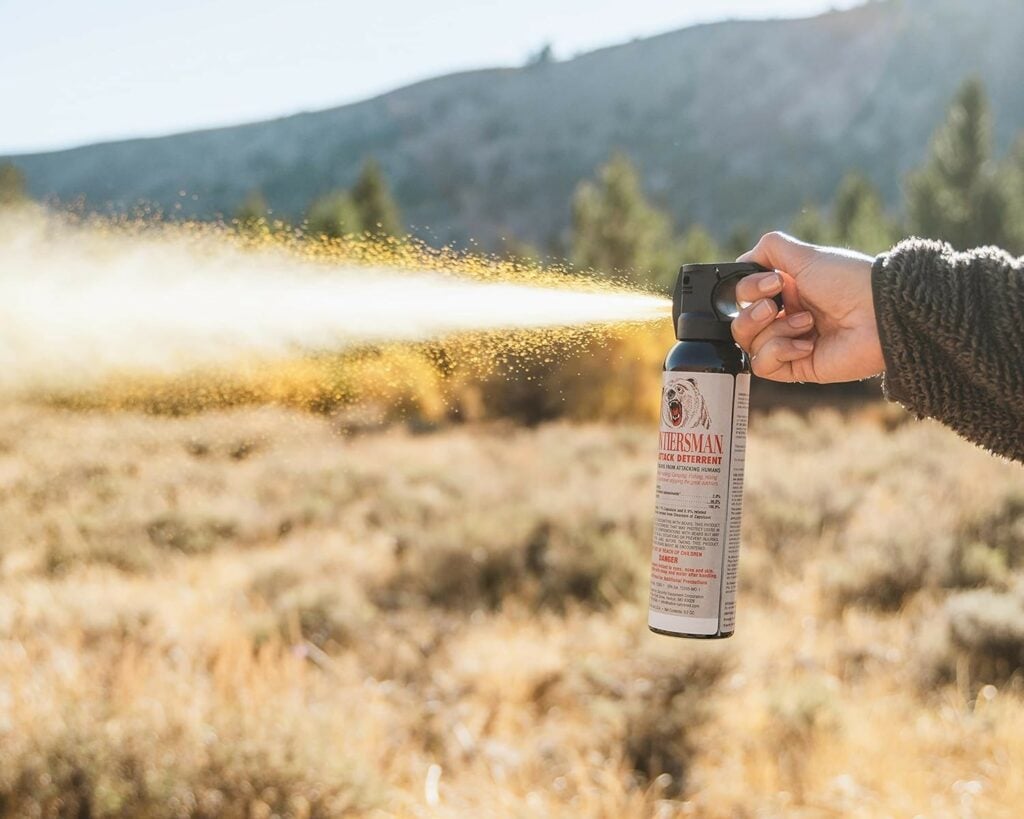
Defending Against Wildlife: Gun vs. Bear Spray
The wilderness isn’t a controlled environment, and risks come in many forms—from wildlife encounters to questionable run-ins with humans. Popular tools of protection include a gun (a handgun, in particular) and bear spray. But which is more effective?
The debate between firearms and bear spray is a hot one, with valid points on both sides. Studies frequently cite bear spray as being highly effective due to its broad dispersion and ease of use. A 25-foot range is often enough to create a barrier between you and a bear, with minimal risk of harm to the animal or bystanders.
However, there are situations where bear spray might fail. High winds, loss of aim, or a situation when the bear is acting aggressive, not simply curious, can render the spray ineffective. Tragic instances, like the Banff National Park mauling where a couple and their dog were killed despite deploying bear spray, highlight this limitation. In such cases, having a gun as a last-resort tool might at least provide a chance to fight off the bear attack. But it’s easier said than done.
Firing at a moving bear is an immensely challenging task. Grizzly bears, for instance, can sprint at speeds up to 30 mph, and hitting the brain—which is about the size of a softball and positioned lower than many assume—is a feat that’s difficult for even seasoned shooters.
For black bears, which often “test” humans before engaging, a handgun may offer a better chance of defense than against a grizzly, much like a bear spray. These animals are generally cautious and less likely to charge without warning, giving hikers time to assess the situation.
On the other hand, when a grizzly attacks, it’s often sudden. Studies suggest they typically ambush at close range, leaving almost no time to react, especially if your firearm is holstered. Without the right gun and competence at using one under pressure, taking a shot at an oncoming grizzly feels like a gamble.
In case of a sudden encounter with a grizzly bear, such as when it’s seeking food, you need to be very careful with charges. Many bear charges are actually “bluff charges,” where the bear does not intend to make contact but rather aims to intimidate and assert dominance. Bluff charges are often a bear’s way of warning humans to back off or leave its territory. In such situations, firing at the bear and missing can escalate the encounter from a dangerous to a lethal one. So, basically, proficiency with a firearm remains the key variable in determining whether it’s a tool of protection or an added risk.
So, as far as defending against bears goes, there’s no definitive answer whether you should go with a spray or a gun. Probably both if you’re backpacking in bear country. The truth is that bear behavior is very complex, and each encounter is unique. What’s certain, however, is that the best strategy is prevention: avoid encounters altogether by making noise, storing food properly, and staying alert to your surroundings.
As for mountain lions, preparation and situational awareness take on a different meaning. Mountain lions are ambush predators, often striking from behind or above without warning, so you can’t really rely on firearm or bear spray here, but having one can give you some peace of mind. But more importantly, consider carrying an air horn that emits a high-decibel noise as a deterrent.
Also, experts often recommend hiking or running in groups and avoiding dawn and dusk hours when mountain lions are more active. Additionally, wearing a mask or sewing eyes onto the back of your gear can confuse a lion by making it think you’re always looking. If you do come face-to-face with one, stand your ground, make yourself appear as large as possible, and speak with authority. Running away triggers their predator instincts, so stay calm and keep making noise until they lose interest. Still, remember, mountain lion encounters are incredibly rare.
Defending Against Humans in the Wilderness
While wildlife tends to be the focus of discussions around backpacking with guns, humans often represent the greater unknown. Remote areas occasionally see activities such as drug operations, illegal hunting, or simply a rogue few individuals who may not have the best intentions. The decision to carry a handgun, in this context, often becomes about peace of mind rather than likelihood of use. Women hiking solo, in particular, often express the desire for an additional layer of security, viewing firearms as empowerment in an unpredictable world.
That said, human confrontations in the wild are rare, and carrying a weapon can paradoxically escalate such situations. The sight of a gun may deter certain individuals but provoke others. Without the training to respond appropriately, even a well-meaning encounter can spiral out of control.
The psychological burden of carrying should also be considered. Situational awareness becomes heightened to the point of some carriers second-guessing every decision, from where they set up camp to how they interact with strangers on the trail. This is not inherently a bad thing but worth recognizing as a mental adjustment that comes with carrying a weapon.
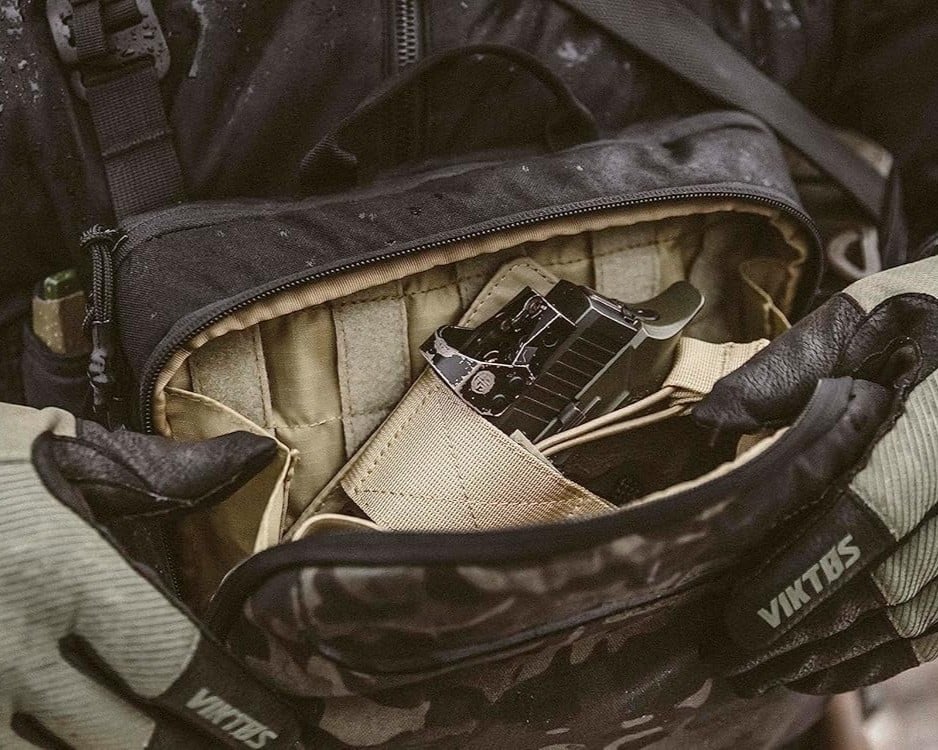
Open Carry vs. Concealed Carry in the Wilderness
If you choose to carry a handgun, how you want to carry it is the second question on the agenda.
As far as accessibility goes, open carrying a handgun in a thigh holster or a chest holster is considered the best option. However, in areas with significant foot traffic or family-friendly trails, it often makes others uneasy.
First off, a gun can send an unintended message that the carrier perceives the environment as inherently dangerous. Then, it’s not uncommon for other hikers to associate open carry with aggression or paranoia, especially in regions where gun culture isn’t dominant, which can disturb the peaceful, communal vibe of outdoor recreation. Finally, those who open carry might become a target for those with bad intentions, rather than a source of safety.
Concealed carry solves the issue of public perception but is less practical during an emergency. Backpacks, waist belts, and multiple layers of clothing can hinder access. Chest rigs are popular for balancing accessibility and comfort, but these are rarely designed for concealment. Fanny pack-style gun holsters, on the other hand, are often purpose-built to provide quick access while concealing your gun to prevent scaring other trekkers.
Ultimately, the decision should depend on the environment and the likelihood of human threats in the area you’re hiking. A casual stroll through a popular suburban trail is vastly different from venturing into remote, wildlife-heavy backcountry regions. Understanding the local context and weighing the trade-offs thoughtfully is key.
Solutions for Carrying a Gun when Backpacking: Gun Packs, Gun Backpacks, Holsters, Rigs
Chest Holsters
Chest holsters are widely praised for their unbeatable accessibility when wearing a backpack—they keep your handgun right where you need it, above hip belts and out of the way of pack straps. Many hikers and hunters say they’re the go-to for carrying larger revolvers or semi-autos in bear country. The trade-off is that some find them bulky, especially if you’re wearing a hydration pack or multiple layers, and they can take a little time to adjust for comfort and fit.
Here are some the options to consider:
Chest Rigs
Chest rigs, which combine a holster with extra pouches for magazines or gear, are popular with users who want everything up front and ready. They’re especially valued for backcountry trips where you might need to reload quickly or carry other essentials on your chest. The main complaint is that they can feel overbuilt or heavy for casual hikes, and the extra bulk can get in the way when scrambling or bushwhacking.

VIKTOS Low Key Chest Rig
$95.00
Price accurate at time of writing
Specs:
- Weather-resistant nylon ripstop with carbon fiber reinforcement chassis
- Adjustable / removable 4-point padded chest harness
- Includes removable shoulder strap for casual carry
- Magnetic quick-release buckles
- Hook Velcro back panel for attaching to plate carrier
- Elastic tourniquet loops; Internal loop Velcro MOLLE
- Includes adjustable / removable pistol holster
- 4 internal elastic pistol magazine/EDC straps; 3 internal elastic rifle magazine straps
- Quick-access admin pocket; YKK zippers with quiet pulls
OWB Drop Leg Holsters
Drop leg holsters get a lot of love from those who want fast, unobstructed access—especially hunters or folks running sidearms with longer barrels. They’re a solid choice if you’re not carrying a big pack with a hip belt, since they keep the gun clear of your waist. However, seasoned backpackers often point out that they can slap against your leg, snag on brush, and get uncomfortable on long walks, so they’re best for short stints or open terrain.
Gun Backpacks, Tactical Backpacks, and Gun Packs
These packs are a favorite among backpackers who want to keep their firearm discreet and secure while hauling gear. They’re especially handy for multi-day trips or when you want to avoid advertising that you’re carrying. Gun backpacks are not typically designed for quick-draw scenarios but rather for secure storage and transport. They are ideal for situations where immediate access to the firearm is less critical, such as when hiking in areas with low bear activity or when the firearm is primarily for camp defense.
Always double-check that the pack’s holster system is actually secure and designed for safe carry.

VERTX Gamut Gun Backpack
$179.99 - $242.99
Price accurate at time of writing
Specs:
- Rapid Access Pull tab
- Ballistic panel compatible; Added 0.5" of depth to CCW compartment
- Convertible front flap stows behind MOLLE panel
- Laser-cut MOLLE is lower profile
- Gatekeeper G-hooks prevent unintended exposure of gear stored in the CCW compartment
- Main compartment opens 180 deg
- Modular padded laptop sleeve adjusts in size and position
- Accommodates up to 15" laptop
- 3-D molded foam back panel
- Bonded nylon thread throughout with critical seams and attachment points

SAVIOR EQUIPMENT Specialist Series Covert 30in Single Rifle Case
$89.99
Price accurate at time of writing
Specs:
- Padded Single Rifle Compartment
- Exterior Accessory Pockets
- Concealed Pocket
- Hideable Padded Backpack Straps
- 600D Polyester Exterior and Interior Shell
- Synthetic Rubber and Ripstop Exterior
- Loop LCM Panel; Woven Cinch Straps
- Durable Side Release Buckles; Sternum Strap
- Lockable Zippers; Double-Stitched Seams
Gun Fanny Packs
Gun fanny packs are often recommended for day hikes or situations where you want to stay low-key. They’re lightweight, don’t interfere with a backpack, and provide fast access—many users say they’re the most comfortable way to carry in hot weather. Downsides include limited space for extra gear or larger handguns, and the fact that they can stand out in some settings, making them less “covert” than they seem.

VERTX SOCP Tactical Fanny Pack
$89.99
Price accurate at time of writing
Specs:
- Loop-lined back CCW compartment
- Full mesh pocket and stretch admin pockets
- Includes holster retainer in CCW compartment
- Retainer strap to hold magazines in CCW compartment
- Extended pockets into each wing for extra storage
- Paracord hot-pull tab in CCW compartment to expedite access to your weapon
- Adjustable waist strap for multiple wear positions: around the waist or crossbody
- External cellphone pocket with zippered access and touch screen window can be folded down to use as NAV board and adjusts to fit most cell phones
The Weights You Carry: Arguments against Carrying a Handgun in the Wild
Carrying a firearm on a hike adds literal and figurative weight. A handgun, along with its holster, ammunition, and spare magazines, can add 1-5 pounds to your pack, which is significant if you’re trying to keep things lightweight for long treks. Some hikers argue that carrying the essentials for survival, like proper layers, a GPS device, a med kit, and extra food, should take priority over “what-ifs.”
There are logistical challenges, too. Different states, federal lands, and private properties have varying regulations about where firearms are allowed. Navigating these laws requires careful planning, including securing proper permits and researching rules for every area you plan to visit. Additionally, safely storing your handgun during pit stops, like gas stations or trailhead parking lots presents additional challenges, including theft risk.
Accidental discharges, improper gun handling, and the lack of adequate training and competence at using it effectively under threat can also create dangerous situations. Proper gun training is your responsibility if you choose to own and carry a gun. Unfortunately, while emphasized by nearly all pro-carry advocates but is often overlooked in practice by casual firearm owners.
Finally, like we discussed already, a gun can become a threat to normal people and a target to bad guys, unless you adjust your carry method accordingly.
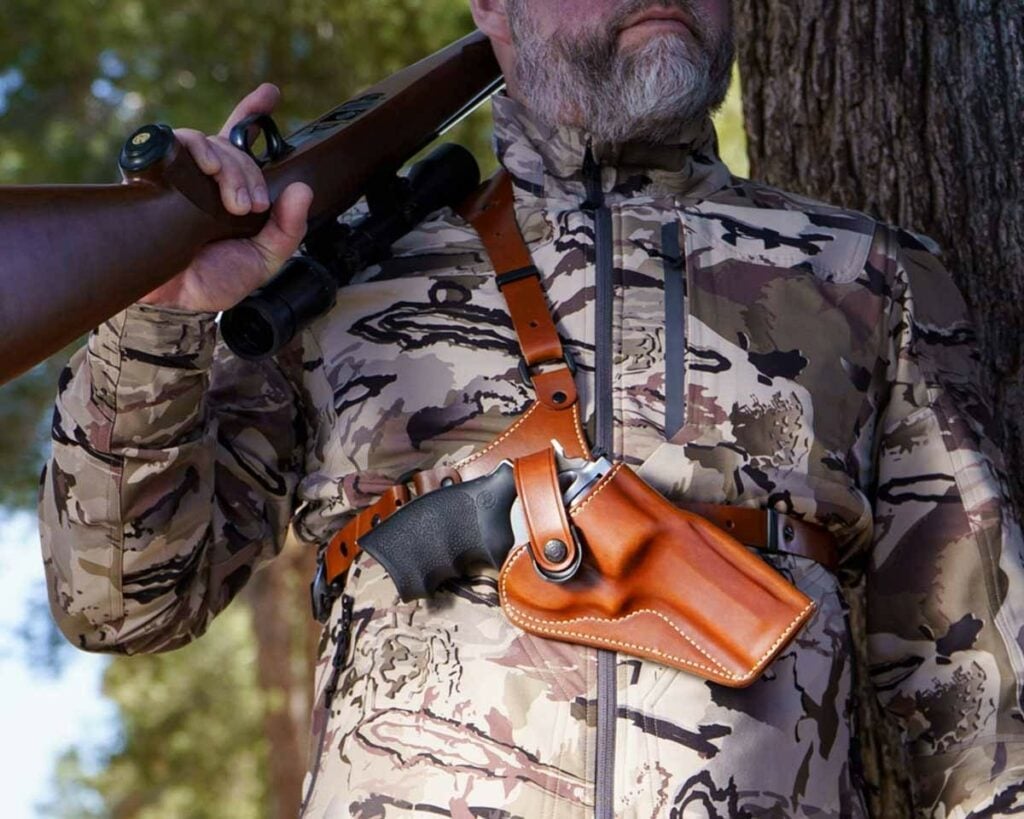
Practical Tips for Those Who Choose to Carry
If you decide that carrying a handgun is the right choice for you, preparation is key:
- Train Regularly: Regular practice under stress-simulating conditions is essential. Spend adequate time at the range practicing drawing and firing at moving targets. You must be confident with your firearm!
- Carry the Right Gun & Gear: Choose a proper gun suited for wilderness defense (e.g., a 10mm or .357 Magnum). Additionally, invest in a secure holster that keeps the weapon readily accessible while protecting the trigger.
- Supplement with Non-Lethal Tools: Pair your handgun with bear spray and ensure you’re knowledgeable about wildlife behavior, food storage practices, and campsite setup to avoid encounters in the first place.
- Know the Laws: Research the firearm regulations for the specific area you’ll be hiking in. Some national and state parks prohibit firearms, and others have strict transport and storage requirements.
- Focus on Avoidance: Even when armed, make situational awareness a priority. Make noise to announce your presence to wildlife.
- Respect Fellow Hikers: If hiking on popular trails, be mindful of how your firearm might affect others. Conceal your weapon when possible and approach each encounter with courtesy. Avoid flaunting your firearm to strangers unless absolutely necessary.
